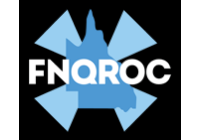Hinchinbrook (S)
About the profile areas
The 2023 Estimated Resident Population for Hinchinbrook (S) is 11,118, with a population density of 3.98 persons per square km.
Location and boundaries
Hinchinbrook Shire is located in Far North Queensland, about 1,400 kilometres north-west of the Brisbane CBD, and about 110 kilometres north-west of the Townsville CBD. Hinchinbrook Shire is bounded by the Cassowary Coast Regional Council area in the north, the Coral Sea in the east, Townsville City in the south-east, the Charters Towers Regional Council area in the south and south-west, and the Tablelands Regional Council area in the north-west.
Traditional Owners
The original inhabitants of Hinchinbrook Shire were the Nywaigi and Warakamai Aboriginal people.
Name origin
Hinchinbrook Shire is named after nearby Hinchinbrook Island, which was thought to be named after one of the titles held by the Montagu family, formerly Earls of Halifax.
Important
|
Population11,118 2023 ABS ERP |
Land area2,794 square km |
Population density3.98 persons per square km |
Settlement history
European settlement dates from the 1860s, although population was minimal until the 1870s, with land used largely for sugar cane growing, with some cattle grazing. Growth took place during the late 1800s, as numerous small townships were established, beginning with Ingham in the 1870s. Expansion continued during the early 1900s, aided by the opening of the railway line from Townsville to Ingham in 1919, with the Shire reaching a population of over 10,000 in 1933. Land then became used also for tobacco and fruit and vegetable growing. The population was relatively stable from the 1960s to the early 1990s at about 13,000 people. The population increased to nearly 16,000 in 1996, and then declined to about 12,000 in 2006, and about 11,500 in 2016.
Land use
Hinchinbrook Shire is predominantly rural, with the main township being Ingham, and smaller townships at Allingham (Forrest Beach), Halifax, Lucinda, Macknade, Taylors Beach and Trebonne. Land is used largely for cattle grazing, sugar cane growing, and fruit and crop growing. Tourism is also an important industry. The Shire encompasses a total land area of about 2,800 square kilometres.
Transport
Hinchinbrook Shire is served by the Bruce Highway, Ingham Airport and the Tilt Train.
Major features
- Major features of Hinchinbrook Shire include Girringun National Park (including Mount Fox),
- Halifax Bay Wetlands National Park,
- Orpheus Island National Park,
- Paluma Range National Park,
- The Great Barrier Reef,
- Great Barrier Reef Marine Park,
- Wet Tropics World Heritage Area,
- Hinchinbrook Channel,
- Orpheus Island,
- Pelorus Island,
- Wallaman Falls,
- Jourama Falls,
- The Herbert River,
- various state forests,
- TYTO (Wetlands,
- Parklands and Regional Art Gallery),
- Herbert River Museum,
- Mungalla Station,
- Port of Lucinda,
- Lucinda Jetty,
- several beaches,
- TAFE Queensland North (Ingham Campus),
- Ingham Health Services,
- Hinchinbrook Aquatic Centre,
- Ingham Golf Club and the Herbert River.
Included areas
- Hinchinbrook Shire includes the localities of Abergowrie,
- Bamabaroo,
- Bemerside,
- Blackrock,
- Braemeadows,
- Coolbie,
- Cordelia,
- Dalrymple Creek,
- Foresthome,
- Forrest Beach,
- Gairloch,
- Garrawalt,
- Halifax,
- Hawkins Creek,
- Helens Hill,
- Ingham,
- Lannercost,
- Long Pocket,
- Lucinda,
- Macknade,
- Mount Fox,
- Orient,
- Palm Island (part),
- Peacock Siding,
- Taylors Beach,
- Toobanna,
- Trebonne,
- Upper Stone,
- Victoria Plantation,
- Wallaman,
- Wharps and Yuruga. Hinchinbrook Shire does not include Hinchinbrook Island,
- which is located in the Cassowary Coast Regional Council area.
